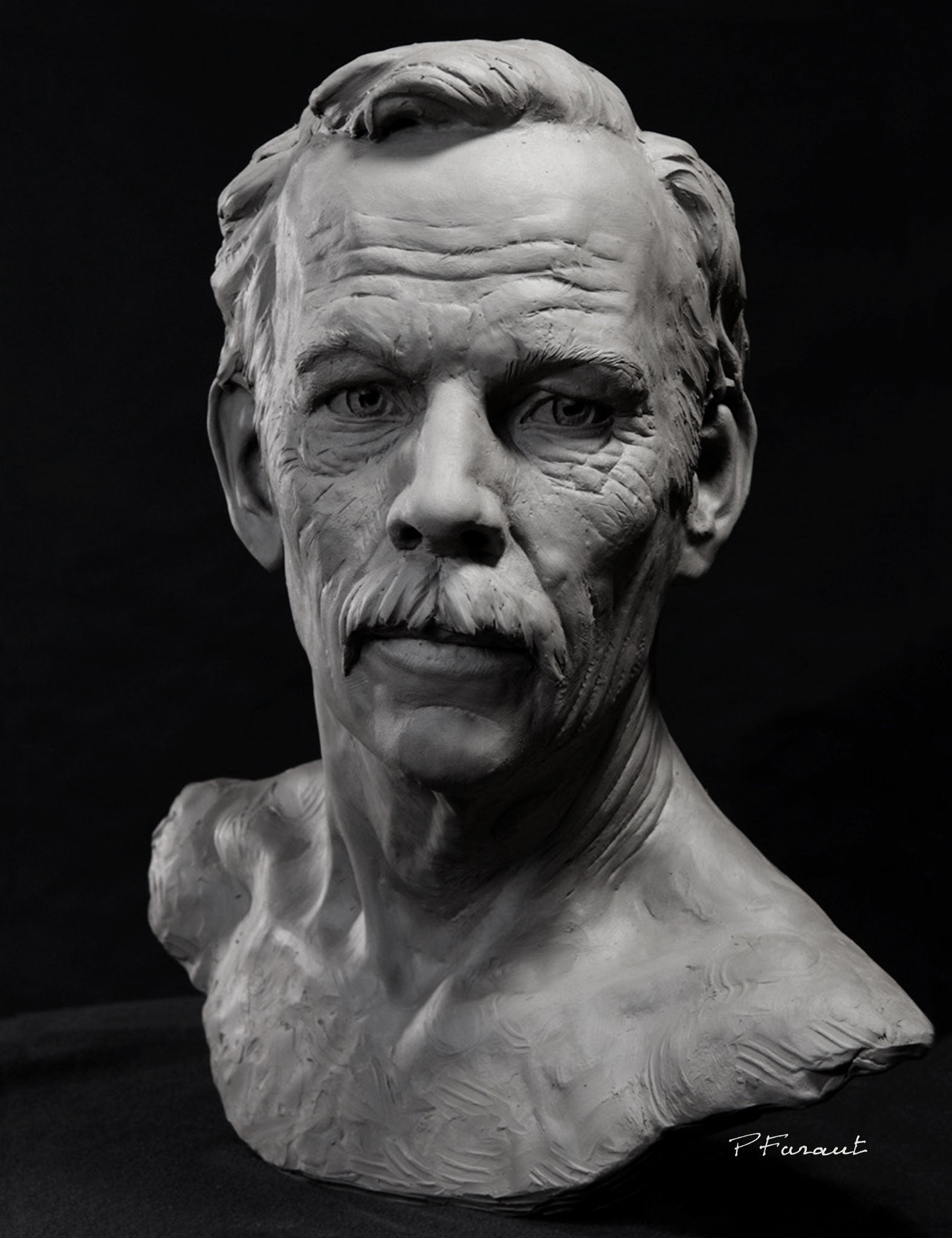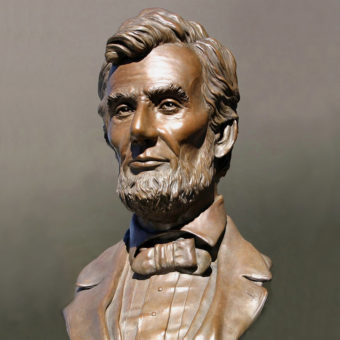Artistic Evolution: From Classic to Modern with Bronze Sculptures
Wiki Article
The Impact of Nature in Sculpture Art
The impact of nature in sculpture art is a topic that has astounded artists throughout history. Significance of all-natural elements is an additional way in which nature affects sculpture, as artists imbue their developments with the significance and organizations fundamental in these components - Robert C Hitchcock Sculptor. Eventually, sculpture art has the power to catch the transience of nature, freezing a minute in time and permitting us to appreciate its elegance in all time.Organic Types and Shapes
Organic kinds and forms, influenced by the elaborate patterns and unified frameworks found in nature, play a pivotal function in the world of sculpture art. Sculptors have actually long been captivated by the appeal and intricacy of the all-natural world, finding inspiration in the stylish curves of a seashell, the fragile flowers of a blossom, or the turning branches of a tree. By imitating and extracting these natural forms, musicians have the ability to create sculptures that evoke a feeling of harmony and equilibrium.One of the factors natural kinds and shapes are so prevalent in sculpture art is their capacity to attach with audiences on a deep psychological level. The natural globe recognizes to us all, and when we see these types represented in art, it evokes a feeling of convenience and recognition. It advises us of our area in the grand system of things and allows us to get in touch with something higher than ourselves.
Additionally, organic types and forms in sculpture art typically symbolize a feeling of motion and energy. The streaming lines and dynamic make-ups resemble the continuous movement and growth discovered in nature. This creates a sense of vitality and brings sculptures to life, making them show up as if they might continue to evolve and change prior to our eyes.
Appearance and Product Expedition
A substantial element of sculpture art affected by nature is the exploration of appearance and materials with making use of numerous techniques and tools. Artists commonly draw inspiration from the varied appearances found in the all-natural globe, such as the harsh bark of a tree, the smooth surface of a pebble, or the elaborate patterns on a leaf. By including these textures right into their job, carvers can create a responsive experience for visitors, welcoming them to engage with the artwork on a sensory degree.Structure can be accomplished in sculpture with a variety of methods. Some musicians choose to carve or sculpt straight right into the chosen material, developing a three-dimensional surface area that simulates the structures discovered in nature - Robert C Hitchcock Sculptor.
Material expedition is additionally a significant part of sculpture art affected by nature. Artists may venture right into uncharted area, choosing brand-new products that evoke the essence of the environment. For instance, they might integrate natural environments like branches, leaves, or perhaps soil into their sculptures, obscuring the boundaries between art and the environment. Bronze Sculptures. By pressing the limits of standard materials and strategies, carvers can produce visually sensational and conceptually rich works that commemorate the appeal and diversity of nature.
Importance of Natural Elements
The consolidation of natural aspects in sculpture art includes a layer of symbolism and depth to the artwork. By using products discovered in nature, sculptors are able to imbue their productions with significance that resonates with visitors on an extensive level. Natural environments such as wood, rock, and plants have actually been made use of throughout history to communicate various symbolic messages.Sculptures crafted from this product can evoke a feeling of connection to the earth and the cycles of life. Sculptures sculpted from stone can signify the timeless nature of certain ideas or ideas.
Plants and blossoms are also frequently integrated into sculpture art, representing styles of appeal, renewal, and development. The fragile flowers and lively colors of flowers can stimulate sensations of happiness, while the intertwining branches of plants can signify interconnectedness and unity.
Along with these natural materials, sculptors may additionally use natural environments such as fire, wind, or water to better improve the symbolic message of their artwork. These components can stand for the transformative power of nature, the flow of time, or the forces that form our world.

Representations of the Environment
Representations of the Environment can be seen in sculpture art with the unification of natural environments and the representation of environmental styles. Sculptors often draw ideas from the environment, using products such as timber, rock, and even recycled products to produce their art work. By utilizing these natural environments, they not just pay homage to the setting but additionally create a stronger link in between the artwork and its surroundings.Along with the materials made use of, sculpture art also mirrors the atmosphere via the representation of environmental motifs. Many artists select to show pets, plants, or landscapes in their work, highlighting the elegance and frailty of the environment. These sculptures function as reminders of the value of protecting our setting and the demand for lasting methods.

In addition, ecological sculptures commonly intend to increase recognition about pushing ecological problems. They work as graphes of the impact of human tasks on the atmosphere, such as climate, contamination, or logging modification. By illustrating these problems in their artwork, sculptors really hope to influence viewers to do something about it and become much more aware of their own environmental impact.
Capturing the Transience of Nature
Sculpture artists additionally discover the impact of nature by skillfully capturing the ephemeral and ever-changing elements of the environment. Through their artistry, these artists intend to illustrate the fleeting charm and transience of nature, evoking a sense of wonder and consideration in viewers.One method which sculpture musicians record the transience of nature is by utilizing products that are themselves based on degeneration and modification. For instance, artists might select to work with natural materials such as fallen leaves, flowers, or wood, which naturally deteriorate with time. This intentional choice highlights the brevity of nature and reminds us of the inescapable cycle of life and fatality.
Additionally, sculpture artists frequently utilize techniques that produce a feeling of activity and fluidity in their job. By integrating streaming lines and dynamic types, they communicate the ever-changing nature of the natural world. This can be seen in sculptures inspired by wind, water, or the development of plants, where the musician seeks to great post to read catch the significance of consistent activity and transformation.
Furthermore, some musicians select to produce temporary or site-specific installments that engage with the setting. These ephemeral sculptures, made from materials such as sand, light, or ice, are deliberately made to gradually go away or alter with time. By accepting the transient nature of their developments, musicians welcome visitors to review the fleeting appeal of the natural globe and the impermanence of human presence.

Conclusion
In conclusion, nature has a profound influence on sculpture art (Robert C Hitchcock Sculptor). Appearance and material exploration better enhance the link to nature, as musicians commonly integrate natural materials into their sculptures.
Meaning of all-natural elements is one more method in which nature affects sculpture, as musicians imbue their productions with the significance and associations inherent in these components.A considerable element of sculpture art affected by nature is the exploration of appearance and products via the use of various techniques and tools (Equine Sculptures).Product exploration is additionally a considerable part of sculpture art influenced by nature.One way in which sculpture musicians capture the transience of nature is by utilizing products that are themselves subject to degeneration and adjustment. Appearance and product expedition even more enhance the connection to nature, as musicians typically include natural materials right into their sculptures
Report this wiki page